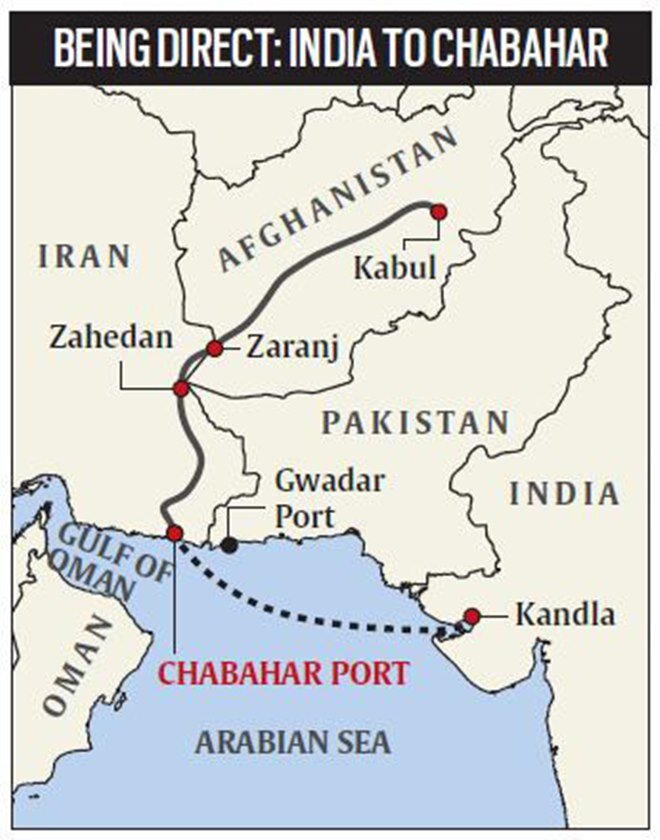India Dropped from Chabahar Rail Project | 14 Jul 2020
Why in News
Recently, Iran has decided to proceed with the Chabahar rail line construction on its own, citing delays from the Indian side in beginning and funding the project.
Chabahar Port
- Chabahar port is located on the Gulf of Oman and is only 72 km away from the Gwadar port in Pakistan which has been developed by China.
- The port serves as the only oceanic port of Iran and consists of two separate ports named Shahid Beheshti and Shahid Kalantari.
Key Points
- Iran has inaugurated the track-laying process for the 628 km Chabahar-Zahedan rail line, which will be extended to Zaranj across the border in Afghanistan.
- The entire project would be completed by March 2022 and Iranian Railways will use approximately USD 400 million from the Iranian National Development Fund.
- Background:
- In May 2016, India, Iran and Afghanistan signed the trilateral agreement which entailed the establishment of Transit and Transport Corridor among the three countries using Chabahar port in Iran as one of the regional hubs for sea transportation.
- Construction of a rail line from Chabahar port to Zahedan, along the border with Afghanistan as an alternate trade route to Afghanistan and Central Asia, was also a part of it.
- The state-owned Indian Railways Construction Ltd. (IRCON) had signed a Memorandum of Understanding (MoU) with the Iranian Rail Ministry and promised to provide all services, superstructure work and financing (around USD 1.6 billion).
- The Chabahar port is being considered a gateway to golden opportunities for trade by the three countries with other Central Asian countries in the wake of Pakistan denying transit access to India.
- Reasons:
- Despite several site visits by IRCON engineers and preparations by Iranian railways, India never began the work, worrying that it could attract sanctions by the USA.
- India has already zeroed out its oil imports from Iran due to USA sanctions.
- The USA had provided a sanctions waiver for the Chabahar port and the rail line but it was difficult to find equipment suppliers and partners due to worries of being targeted by the USA.
- Another reason could be the ‘Comprehensive Plan for Cooperation between Iran and China’ which is a 25-year and USD 400 billion strategic partnership deal.
- Both nations are close to finalising the deal, which will include Chinese involvement in Chabahar’s duty-free zone, an oil refinery nearby and possibly a larger role in Chabahar port as well.
- The cooperation will extend from investments in infrastructure, manufacturing and upgrading energy and transport facilities, to refurbishing ports, refineries and other installations and will commit Iranian oil and gas supplies to China during that period.
- Iran proposed a tie-up between the Chinese-run Pakistani port at Gwadar and Chabahar in 2019 and offered interests to China in the Bandar-e-Jask port 350 km away from Chabahar, as well as in the Chabahar duty-free zone.
- Despite several site visits by IRCON engineers and preparations by Iranian railways, India never began the work, worrying that it could attract sanctions by the USA.
Way Forward
- The Iran-China deal impinges on India’s strategic ties with Iran and the use of Chabahar port. Bandar-e-Jask lies to the west of Chabahar and right before the Strait of Hormuz which would allow China to extend its control along the Pakistan-Iran coast.
- Each of these possibilities should be watched closely by India and it should strengthen its relations with the concerned countries.
- As an emerging power, India cannot remain confined to South Asia and a peaceful extended neighbourhood (Iran-Afghanistan) is not only good for trade and energy security but also plays a vital role in India's aspirations of becoming a superpower.

